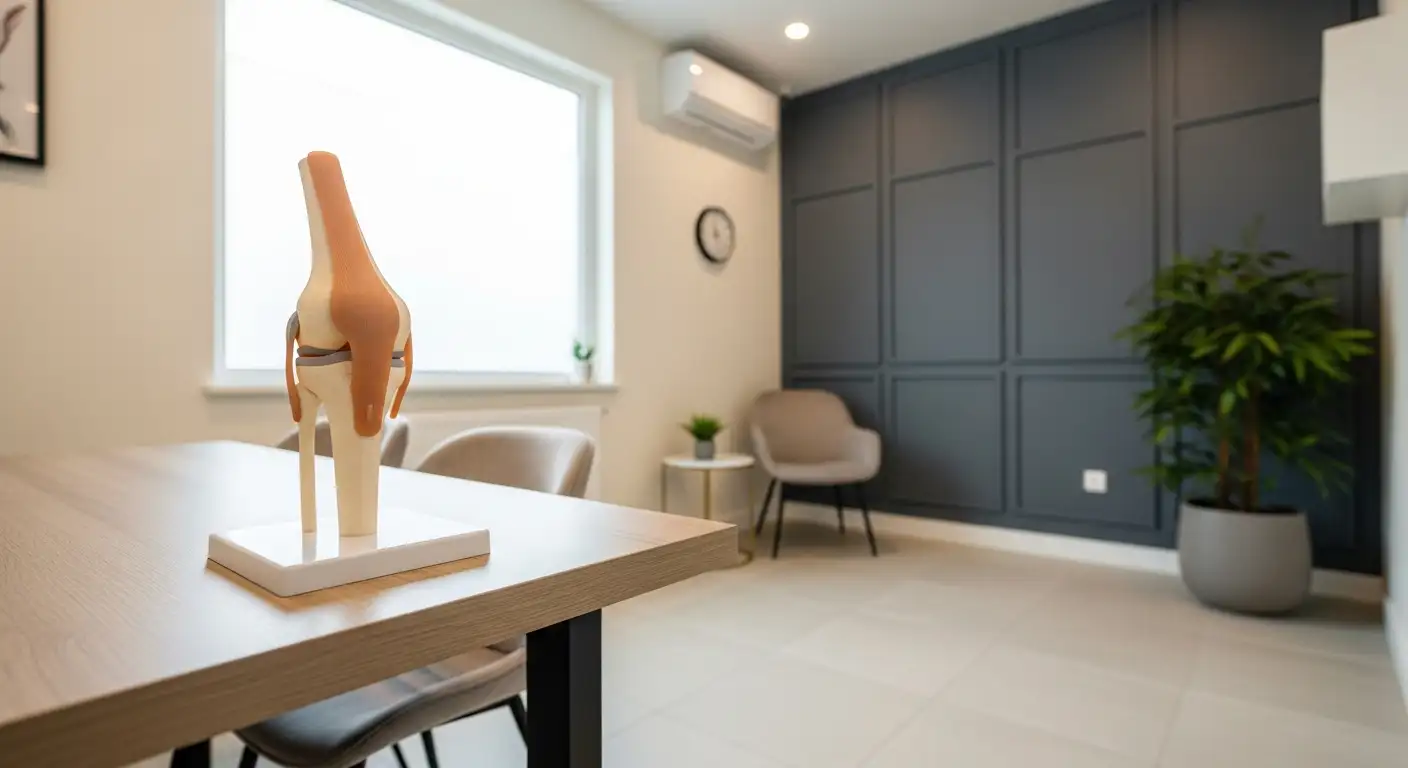Understanding Knee Burning Sensation
A knee burning sensation is a common complaint that can be caused by various conditions, from minor injuries to chronic diseases. This sensation can be an indicator of underlying health problems, and understanding its causes can be the first step towards identifying and treating the issue.
Causes of Knee Burning Sensation
There are numerous conditions that can lead to a burning sensation in the knee. Some of the most common causes include osteoarthritis, ligament tears, patellar tracking issues, runner's knee, tendonitis, and Iliotibial Band Syndrome.
Other possible causes of burning knee pain include knee cartilage tear, which can occur after a blunt force injury or twisting forcefully. This type of injury often leads to pain or a burning sensation in the knee joint [2]. Additionally, burning knee pain can result from problems ranging from gout to arthritis to muscle and ligament injury.

Treatment options for these conditions can vary widely, ranging from over-the-counter pain relief and rest to more intensive treatments such as steroid injections or surgical procedures.
Location-Specific Burning Sensations
The location of the burning sensation can often provide valuable clues about its cause. For instance, burning behind the knee is often caused by factors such as overuse injury leading to runner's knee, chondromalacia, or inflammation of the patellar tendon.
Burning in the front of the knee is frequently due to conditions like runner's knee (chondromalacia), patellofemoral pain syndrome (PFS), or tendonitis from inflammation of the patellar tendon.
Conversely, a burning sensation on the outside of the knee is commonly caused by iliotibial band syndrome (ITBS) [4].
Understanding the location-specific causes of knee burning sensations can be crucial in diagnosing and treating the underlying condition. It's always recommended to consult a healthcare professional if you're experiencing persistent or worsening knee pain.
Behind the Knee Burning
Understanding the causes of a burning sensation behind the knee can help guide effective treatment and management. The discomfort often originates from a variety of factors, including overuse injuries, inflammation, cysts, or cartilage damage.
Factors Leading to Burning Sensation
A burning feeling behind the knee is often triggered by various factors. Overuse injuries leading to conditions like runner's knee or chondromalacia, or inflammation of the patellar tendon are common causes [4].
Moreover, overuse may also lead to hamstring tendonitis, characterized by inflamed tendons that can result in a burning sensation. Mechanical abnormalities producing excess fluids can result in a cyst, adding to the discomfort at the back of the knee. A torn knee cartilage or meniscus may also result in pain in this area.
Common Conditions and Injuries
Several conditions and injuries commonly result in a burning sensation behind the knee. Among these are knee ligament tears, particularly prevalent among athletes involved in high-intensity sports like hockey and football. The severity of the burning knee pain from these tears can vary, with treatment options ranging from therapies for partial tears to surgical options for more severe cases.
Chondromalacia, another common cause, is characterized by the deterioration of knee cartilage leading to less cushioning in the joint. This can result in a burning sensation in the knee, particularly common among runners. Initial treatments may involve therapies aimed at reducing pain and swelling, with arthroscopic surgery recommended if symptoms persist.
A knee cartilage tear, often resulting from a blunt force injury or twisting forcefully, can lead to pain or a burning feeling in the knee joint. Treatment options for this condition may include over-the-counter pain relief, rest, muscle-strengthening workouts, steroid injections, or surgical options.
In conclusion, understanding the causes and common conditions linked to a burning sensation behind the knee is crucial for identifying appropriate treatment options. It's recommended to consult with a healthcare professional for a thorough evaluation and personalized treatment plan.
Front of the Knee Burning
Experiencing a burning sensation in the front of the knee can be concerning. Understanding the potential causes and associated conditions can help guide treatment and alleviate discomfort.
Potential Causes of Burning Sensation
A burning feeling in the front of the knee can be attributed to a variety of factors. This includes conditions such as runner's knee (chondromalacia) or patellofemoral pain syndrome (PFS), as well as tendonitis from inflammation of the patellar tendon Healthline.
Furthermore, a burning pain could be a warning sign of a dislocated patella, a deteriorating or softening patella, or an accumulation of fluids and swelling Redefine Healthcare. Another cause could be due to excessive stress or tension on the patella tendon Redefine Healthcare.
Conditions Associated with Front Knee Pain
Several conditions are commonly associated with a burning sensation in the front of the knee. For instance, Patellofemoral Pain Syndrome (PFS) can often be managed with nonsurgical treatments for mild cases. However, for more severe cases, arthroscopy may be recommended as a surgical procedure to remove damaged cartilage fragments Healthline.
Another condition related to this symptom is the irritation of the tissue fold known as medial plica due to overuse or injury Redefine Healthcare.
The cause of the knee burning sensation can vary greatly, and appropriate care should be taken to diagnose the root cause. Consulting a healthcare professional is crucial to establish a proper treatment plan.
Outside of the Knee Burning
A knee burning sensation can occur in various locations around the knee, depending on the underlying cause. When the burning sensation is felt on the outside of the knee, it's often due to specific conditions such as Iliotibial Band Syndrome (ITBS) or meniscus tears.
Iliotibial Band Syndrome (ITBS)
One common cause of burning on the outside of the knee is Iliotibial Band Syndrome (ITBS). This condition is characterized by pain resulting from inflammation of the iliotibial band, a stretch of connective tissue that runs along the outside of the thigh from the hip to the knee.
ITBS commonly affects runners and other athletes who engage in repetitive knee flexion. This repeated motion can cause the iliotibial band to rub against the outside of the knee, leading to inflammation and a burning sensation.
Management of ITBS typically involves rest, ice, and stretching exercises designed to relieve tension in the iliotibial band. In severe cases, physical therapy or other treatments may be needed.
Meniscus Tears and Other Causes
In addition to ITBS, other conditions can cause a burning sensation on the outside of the knee. For example, a tear in one or two of the menisci - the cartilage disks that cushion the knee - can lead to a variety of symptoms, including a burning sensation [3].
Meniscus tears are commonly caused by a sudden twist or turn of the knee, especially when the foot is planted and the knee is bent. These injuries are common in sports but can also occur due to aging or degeneration of the knee joint.
Treatment for meniscus tears depends on the severity and location of the tear. While some tears may heal with rest and conservative treatment, others may require surgical intervention.
If you're experiencing a burning sensation on the outside of the knee, it's important to seek medical evaluation to determine the underlying cause. Once the cause is identified, a treatment plan can be developed to alleviate symptoms and promote recovery.
Treatment Approaches for Knee Burning
When experiencing a knee burning sensation, it is critical to understand the treatment options available. These can range from non-surgical management options to surgical interventions and procedures. Let's examine these in more detail.
Non-Surgical Management Options
Non-surgical treatments are generally considered as the first line of defense against knee pain. They are aimed at reducing inflammation, pain, and enhancing mobility.
Physiotherapy, for instance, can be incredibly beneficial in managing knee pain. It involves specific exercises and muscle therapy that can strengthen the knee and help alleviate pain.
Another non-surgical treatment option is the use of non-steroidal anti-inflammatory medications, such as acetaminophen and duloxetine. These medications can help manage knee pain caused by arthritis and can be purchased over-the-counter or online.
Alternative treatments like acupuncture and chiropractic care can also be effective in managing knee pain. These treatments aim to relieve pain by correcting imbalances in the body and enhancing overall wellbeing.
Lastly, self-care measures like massage can be beneficial. A study published in 2008 suggested that massaging with an oil containing ginger and orange improved pain and function in knees with moderate to severe pain due to osteoarthritis.
Surgical Interventions and Procedures
When non-surgical treatments do not yield significant improvements, surgical interventions may be recommended. However, these are typically considered as the last resort and are usually suggested when the knee condition is severe or when the pain significantly impairs one's quality of life.
The type of surgical procedure will highly depend on the underlying cause of the knee burning sensation. For instance, for conditions like patellar tendinitis, surgery may be recommended if initial treatments don't lead to improvements.
While surgical interventions can be effective in treating knee pain, they come with potential risks and complications. Therefore, it is highly recommended to consult a medical professional if knee pain persists to understand the underlying cause and explore all potential treatment options.
In conclusion, treating a knee burning sensation involves a multi-faceted approach that combines both non-surgical and surgical treatments. By understanding these options, individuals can make informed decisions and choose the best treatment option based on their specific condition and needs.
Prevention and Home Care
When dealing with a knee burning sensation, preventative measures and home care remedies can play a vital role in managing symptoms and promoting overall knee health.
Preventive Measures for Knee Health
To protect the knee joint and alleviate pain, it's important to maintain a healthy lifestyle and engage in regular physical activity. Walking, cycling, swimming, tai chi, and yoga can help delay the development of osteoarthritis (OA), a common cause of knee pain, by strengthening the body's support for the joints and promoting the health of cartilage tissue [6].
Strengthening the quadriceps muscles through exercise can also provide additional support to the knee joint. This, combined with maintaining an appropriate weight, can significantly reduce long-term knee pain, including pain caused by arthritis. Extra weight puts more stress on the joints, leading to inflammation. Eating a balanced diet can aid in weight management and overall joint health [6].
Home Remedies and Self-Care
Home remedies for knee pain are numerous and can provide relief from discomfort. These remedies include the PRICE method (Protection, Rest, Ice, Compression, and Elevation), maintaining proper posture, weight management, massage, heat and cold therapy, topical application of herbs and oils, and Epsom salt baths.
Additionally, a study published in 2008 suggested that massaging with an oil containing ginger and orange improved pain and function in knees with moderate to severe pain due to osteoarthritis. Massage, including self-massage, may be beneficial in relieving knee pain.
Non-steroidal anti-inflammatory medications, such as acetaminophen and duloxetine, may also help manage knee pain caused by arthritis. These medications can be purchased over-the-counter or online.
Physiotherapy, acupuncture, and chiropractic care are alternative treatments that can help manage knee pain through exercises, muscle therapy, and adjustments, offering options beyond intensive medical processes.
If knee pain persists, it is recommended to consult a medical professional to understand the underlying cause and explore treatment options such as medication and surgery [5].
References
[1]: https://www.donjoystore.com/injury-info-center/knee-injury-guide/burning-knee
[2]: https://www.medicalnewstoday.com/articles/326915
[3]: https://redefinehealthcare.com/7-causes-of-burning-knee-pain/
[4]: https://www.healthline.com/health/burning-in-knee
[5]: https://www.physiotattva.com/blog/home-remedies-for-knee-pain-best-remedies-are-shared-here





